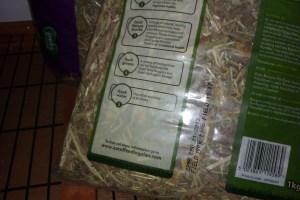Showing you have made an effort to disclose where you source or manufacture is in vogue in the moment. Over the past couple of months, I have collected a number of examples from across a diverse range of sectors.
By typing in a code stamped on the tin of their product, John West claim you are able to ‘trace your can right back to the stretch of water your fish was caught in and even to name the boat that caught it too.’ Nice idea, but sadly it didn’t work for my tin of tuna chunks, though by reading the text on the top, I was able to find out that the contents were from the Western Pacific and a product of Thailand. That’s not quite in the same league as getting the name of a boat. Expectations set too high.
Marks and Spencer let you know if their products were made in an eco-factory. This creates a rather incongruous addition to the standard information you get when checking out a possible purchase. Take a pair of chinos for example: ‘A stylish smart casual look, these straight leg chinos are made from soft cotton and designed for a comfortable and relaxed fit. They are made in an eco-factory, designed to use less energy and create less waste.’ I am not sure what the customer is supposed to make of this fact – feel less guilty as they hop into their SUV wearing these chinos?
Telling you where things come from has even spread to pet food. On a pack of bag of hay with dandelion and marigolds (for our rabbits), I saw ‘Field name: Fire Field’ printed on the side. Now, I would like to think that my rabbits are munching on herbage from Fire Field, but given that was printed on all the other packs, I am not so sure it makes sense unless it was an enormous field. I’ll keep checking.

My final, and perhaps most radical example, is from the world of fashion. Honest By is a Belgium fashion label which gives you extensive information about their clothing range: material details (what exactly the fabric, buttons etc are made from and the suppliers), manufacturing details (the name and address of the factories used), price calculation (how much the fabric, zip etc cost, as well as the mark-up for development, transport, branding etc), and the carbon footprint. I looked at a cotton jersey bomber cardigan and found that the material cost was just over €40 out of a total cost of approx. €800. Very revealing indeed.
Now all this is well and good but recent stories in the media show how far we have to go in getting information on sourcing where it really counts. The horse meat scandal demonstrates that we still have huge blind spots in terms of getting to grips with knowing about what we are purchasing and consuming. The above examples become silly distractions in the light of such fundamental gaps in knowledge.
